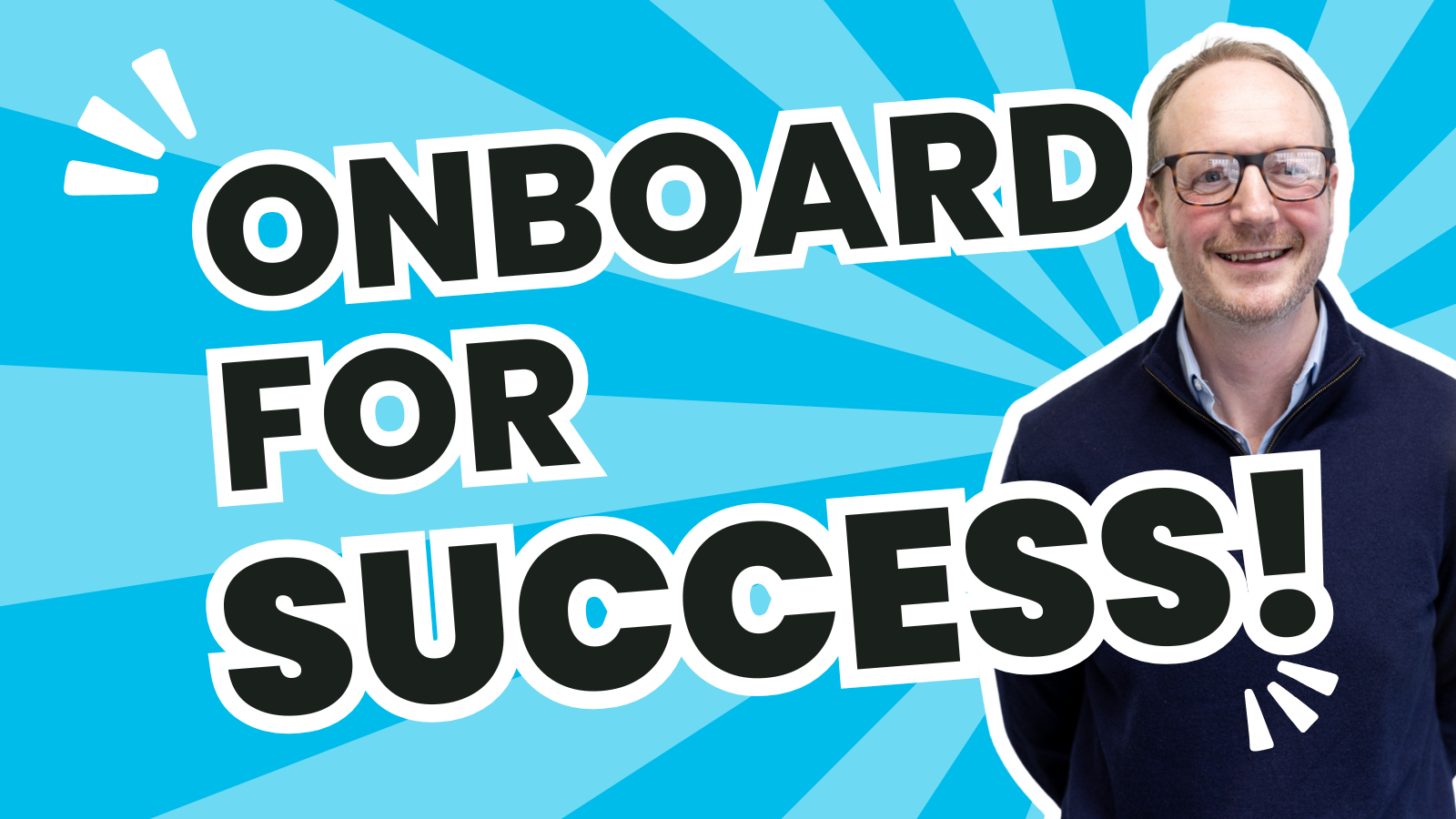
Onboard for Success
Having an on-boarding plan as part of your overall recruitment process, is more than just a quick walk through the office and a meet and greet on day one, it’s a process that can help new hires feel engaged, supported and confident that they have made the right choice about joining your company.
We can break down the on-boarding process into 3 keys areas including pre-boarding, on-boarding and off-boarding, and all 3 have an important role part to play in an employee’s life cycle in your company.
Pre-boarding is key
The period between a candidate accepting your offer and them starting is a great opportunity to establish a positive and welcoming message, keep the person engaged and to find out if they have any further questions that can reduce any anxiety before they start.
So much can happen while the candidate is waiting to start including counteroffers, other job opportunities and some pre-start jitters if questions haven’t been addressed, that can all influence the candidate changing their mind and deciding not to start at all.
Why Pre-Boarding Matters
Building Excitement and Reducing Anxiety: Pre-boarding helps amplify excitement and ease any concerns new hires might have. A welcome email, team introduction, or branded package can make new employees feel valued and eager to start.
Creating a Sense of Belonging: Introducing new hires to company culture and team dynamics early fosters a sense of belonging, making them feel like part of the team before day one.
Improving Employee Readiness: By handling paperwork, setting up accounts, and providing training materials during pre-boarding, companies ensure new hires are ready to hit the ground running.
Enhancing Communication: Regular check-ins and updates keep new hires engaged, reducing uncertainty and reinforcing their decision to join.
Reducing Early Turnover: Effective pre-boarding strengthens the new hire’s commitment, lowering the risk of them reconsidering their decision before starting.
Key Pre-Boarding Strategies
Personalised Welcome: A personalised welcome message from leadership sets a positive tone.
Pre-Boarding Portal: A centralised hub for paperwork and company info helps new hires prepare.
Virtual Meet-and-Greets: Early connections with teammates build relationships.
Clear First-Day Expectations: Detailed itineraries reduce anxiety and ensure a smooth start.
Onboarding: A Path to Employee Success
Onboarding is more than paperwork—it's a key factor in shaping employee retention, productivity, and engagement. Done well, it aligns new hires with company values, accelerates their contributions, and fosters long-term loyalty. Here's a condensed look at how effective onboarding works.
Why Onboarding Matters
Improved Retention: Structured onboarding boosts employee retention.
Faster Productivity: Proper onboarding equips employees to contribute faster.
Culture Fit: It helps align employees with the company's mission and values.
Enhanced Experience: Positive onboarding leads to higher job satisfaction.
Key Onboarding Stages
Pre-Onboarding: Before day one, send welcome materials, complete paperwork, and set up technology.
First Day: Greet with enthusiasm, provide a clear agenda, and foster team introductions.
First Week: Begin role-specific training, integrate into the company culture, and schedule regular check-ins.
First Month: Offer ongoing support, conduct feedback sessions, and set future goals.
First 90 Days: Evaluate performance, adjust onboarding if needed, and discuss career development.
Read more: Retain Your Best Talent
Best Practices
Customise onboarding based on roles.
Pair new hires with mentors or buddies.
Use technology to streamline the process.
Keep communication and feedback consistent.
Focus on long-term employee integration.
Leaders are crucial to successful onboarding. Their involvement shows new hires they are valued and reinforces the company culture.
A well-structured onboarding process is a strategic investment, driving retention, productivity, and employee satisfaction. It’s essential for setting up new hires—and the company—for future success.
Offboarding: Why its needs to be done right
While onboarding is often prioritized, offboarding—the structured process of transitioning an employee out of the organization—is equally important. Whether it's due to resignation, retirement, or termination, offboarding ensures a smooth exit for the employee and protects the company’s interests.
Why Offboarding Matters
Data Protection: Safeguarding company data and assets by deactivating system access and retrieving equipment prevents security breaches.
Employer Branding: A positive offboarding experience enhances the company’s reputation and can turn departing employees into brand advocates.
Legal Compliance: Proper offboarding ensures compliance with labour laws, protects the company from disputes, and handles final payments accurately.
Knowledge Transfer: A structured exit allows for knowledge handover, minimizing disruptions to ongoing projects and ensuring operational continuity.
Alumni Network: Building good relationships with departing employees opens the door to future collaborations, rehiring, or referrals.
How to Create a Successful Offboarding Program
Plan the Timeline: Customise the offboarding process based on whether the departure is voluntary or not, allowing time for transition in resignations and acting swiftly for terminations.
Exit Interviews: Gather honest feedback during exit interviews to understand why employees are leaving and identify areas for improvement.
Knowledge Transfer: Ensure that the departing employee documents their work and trains a replacement to avoid knowledge gaps and project disruptions.
A well-executed offboarding process is key to maintaining a strong employer brand, securing company assets, and leaving the door open for future opportunities.
Watch our onboarding video here: